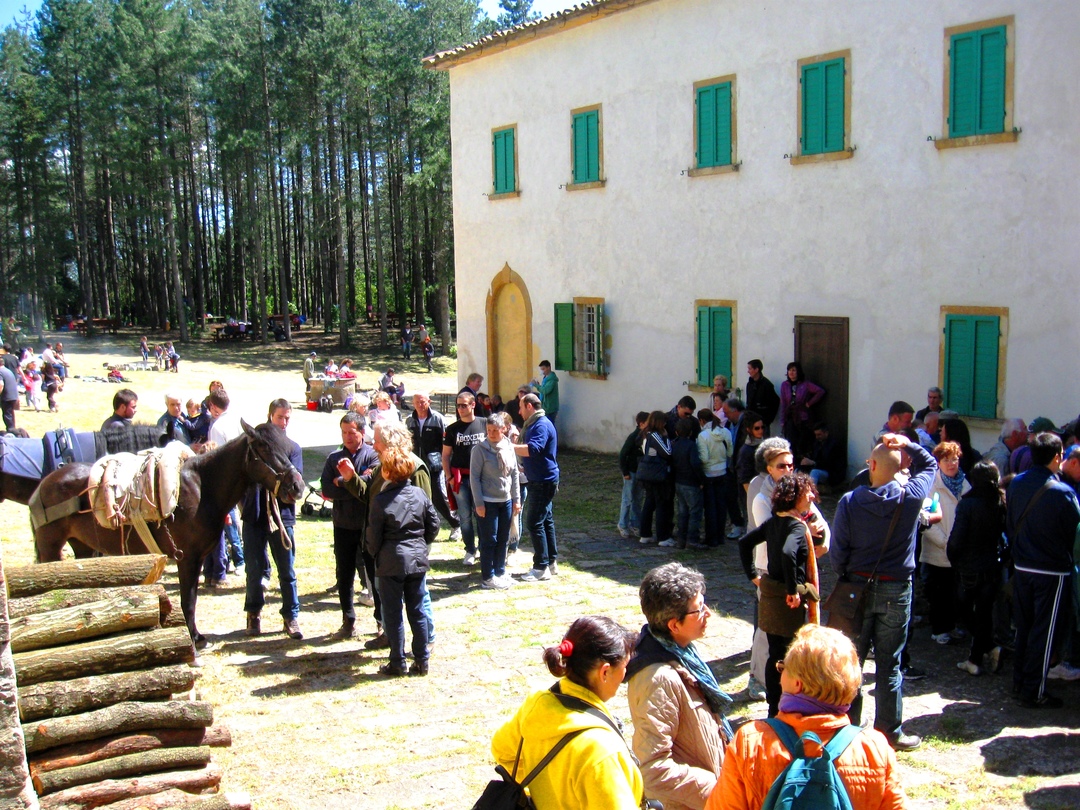Difficulty level
EE
Zu Fuß
Die Villa von Monterufoli und das Linari-Tal
DOWNLOAD THE PDF OF THE NATURE PATH
This route has a very steep and slippery part before the Linari stream, although walking along it is not difficult. The route is not recommended after heavy rain.
The starting point of the route can be reached from the villages of Libbiano, Micciano and Serrazzano, along the dirt road that leads to the Monterufoli Reserve.
This route is part of the “7 Sentieri Natura delle Riserve Naturali” (7 Nature Trails of the Nature Reserves) and it also features a guidebook with marked and numbered waypoints along the way, and indeed here Nature shares the stage with signs of Man’s presence and both interact along the entire route.
The first part of the route will lead you to discover the legendary Villa di Monterufoli, a 17th-century structure built on an ancient medieval castle, known as the “villa of the hundred rooms”, once the centre of an extensive noble estate and now a residential environmental education centre.
The agricultural landscape around the villa has now been transformed, retaining only a few abandoned farms and small areas of fields and pastures that have been converted into pine woods or typical Mediterranean evergreen vegetation. The second part of the route becomes more demanding and crosses the steep northern slopes of Corno al Bufalo, which offer broad, all-encompassing views and an encounter with the rare botanical treasures of the garrigues and scrubland of the Reserve.
The path descends further and the vegetation becomes taller and taller as far up until the Linari stream, where, amidst the luxuriant vegetation of the gorge, we find fascinating evidence of 19th-century mining research: we note a gallery, a mine shaft and other service buildings of what was known as the Caggio Mine.
An old, but easy “path” used by woodcutters and charcoal burners leads up the opposite slope to return to the villa area.

